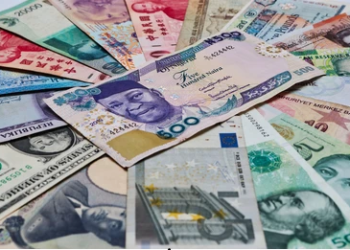Asian central banks are adopting innovative strategies to protect their currencies as concerns about sustained higher US interest rates and escalating global tensions weigh on risk assets.
The Challenge of Differing Interest Rates
Asian currencies face the risk of capital outflows as interest rates in the region tend to be lower than their emerging market counterparts, creating a wider differential with the US.
Innovative Approaches to Currency Support
Central banks in the region are deploying creative solutions to address this challenge. In India, policymakers have indicated a plan to sell more bonds to absorb excess cash, aiming to strengthen the rupee. Indonesian authorities introduced a new line of higher-yield bonds in September, designed to attract inflows and support their currency. Meanwhile, China has initiated a record issuance of local-currency sovereign debt offshore to boost demand for the yuan.
Eddie Cheung, a senior emerging markets strategist at Credit Agricole CIB in Hong Kong, notes that the issuance of higher-yielding bonds by Indonesia and India is a novel approach to support their currencies without resorting to foreign exchange reserves, describing it as a smart strategy.
Balancing Currency Stability, Reserves, and Economic Growth
The use of innovative methods to protect currencies offers a middle ground for central banks facing the dilemma of whether to allow their currencies to weaken, deplete their foreign exchange reserves, or raise interest rates at the risk of hampering economic growth.
Rising US Interest Rates and Global Tensions
The surge of Bloomberg’s dollar index by more than 6% from its July low reflects traders’ growing expectations of higher US interest rates. This trend is driven by concerns related to persistent inflation and robust US economic data. Simultaneously, ongoing global conflicts, such as the war in Ukraine and the Israel-Hamas dispute, have driven up oil prices, fostering demand for the US dollar as a safe haven.
Significance for Global Emerging-Market Indexes
The stability of Asian currencies is of considerable importance for global emerging-market indexes. The yuan, rupee, and rupiah collectively hold a 45% weighting in the MSCI EM Currency Index. Furthermore, China and India’s government bonds constitute a combined 22.2% of the JPMorgan Government Bond Index-Emerging Markets, underlining their global significance.
Depleting Foreign Reserves
India’s decreasing foreign currency reserves suggest that the central bank has been using its reserves to support the rupee. In October, policymakers announced a potential bond sale plan aimed at absorbing excess cash and strengthening the currency by elevating yields. The success of these measures is evident as the rupee has remained stable this year, in contrast to many other emerging market currencies that have weakened.
Indonesia’s central bank, too, has taken action to attract more inflows by issuing Bank Indonesia Rupiah Securities (SRBI), which allows global investors to take short-term currency risk exposure. This move was made as the nation experienced outflows of $1.1 billion from Indonesian bonds last month, the most significant outflow in nearly a year.
Creative Measures to Support Currencies
Vishnu Varathan, Head of Economics and Strategy at Mizuho Bank Ltd. in Singapore, highlights that the measures adopted by India and Indonesia are creative and complement existing currency support strategies, minimizing the reliance on foreign exchange reserves. He also underscores the potential downsides of foreign reserve drawdown, which can exacerbate selloffs.
China’s Strategies to Strengthen the Yuan
China has also employed various measures to reinforce its currency. The government recently announced the issuance of yuan-denominated sovereign bonds to bolster the yuan by increasing demand for the currency. Moreover, the People’s Bank of China intervened in the offshore yuan market, raising borrowing costs for banks to discourage bets against the yuan.
Balancing Act for Investors
Nevertheless, these creative measures come with their own costs. In China, investors holding the nation’s bonds have found it more challenging to hedge as cash rates rise. As Robert Samson, Co-head of Global Multi-Asset at Nikko Asset Management in Singapore, points out, this issue raises concerns for investors, making it difficult to own China bonds if they cannot hedge against currency risks.
Reserve Adequacy Across Asia
While these creative measures don’t completely eliminate the use of foreign exchange reserves, they do reduce the extent to which they are needed. Across most of Asia, reserve adequacy is not a concern, with import cover ratios well exceeding traditional norms of three months.











